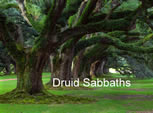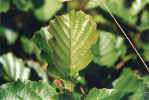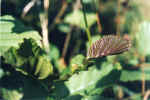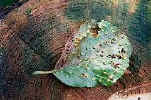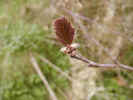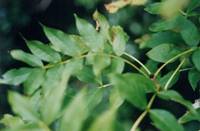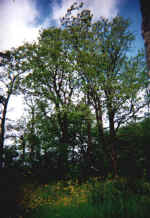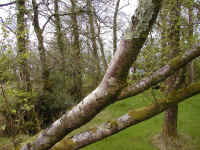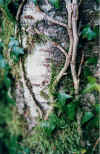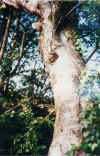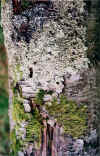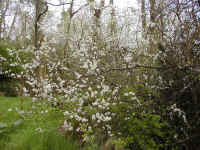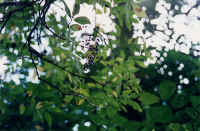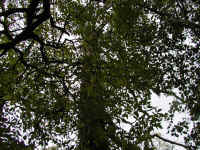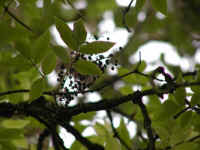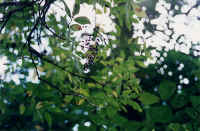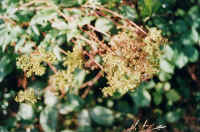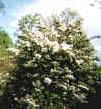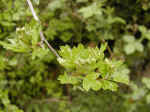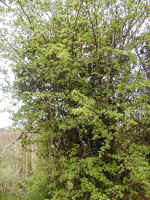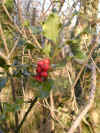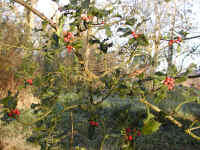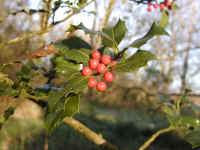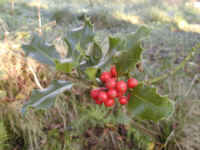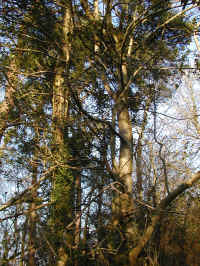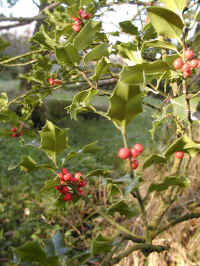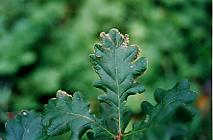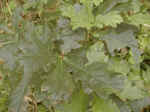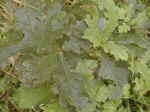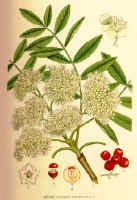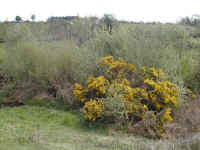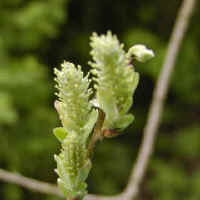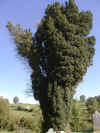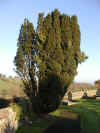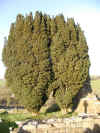|
NAME: Alder
|
|---|
GENDER: Masculine PLANET: Neptune OGHAM LETTER: F fearn
|
||
RITUAL USES
Unless you know exactly what you are doing it may not be wise to use the Alder, however if you are going on a long sea voyage call on Manannan Mac Lír while holding a small alder twig and ask protection during your journey. Nechtan will protect you in fresh-water areas, the Cailleach will help you face the physical effects of old age/debility bravely.
MAGICAL USES
Traditionally in Ireland the Alder wand was used to measure the dead and was marked with protective oghams for this purpose only a druid could handle it without penalty. This survived into folkloric belief and it was considered unlucky to handle alder wood up to the early twentieth century in parts of Ireland. The Alder measuring wand was called a Fe. (The Aspen wand was also used for funereal measuring and has similar superstitions surrounding it).
It was used for cursing one's enemies and it was believed that it could bring death upon them.

ASH |
|
NAME : ASH
GAELIC NAME : NUIN  FUINSEOG
FUINSEOG 
LATIN NAME : Fraxinus excelsior.
COMMON / FOLK NAMES : Nion.
MEDICINAL PART :  Leaves
Leaves  Bark
Bark 
DESCRIPTION : Grows very tall, grows well in water-logged soils helps to drain the land. Outer bark is pale-grey in colour, leaves are opposite oblong lanceolate. It can be coppiced and will grow back quickly after being cut down. Also branches can be taken and planted and will grow.
PROPERTIES :  Febrifuge
Febrifuge 
MAGICAL PROPERTIES
GENDER : Masculine.PLANET : Sun.ELEMENT : Fire.CELTIC GODS : Bel -the Fire God
|
|
RITUAL USES
The ash, to the ancient Teutons, represented Ygdrasill, or the world tree, which was their conception of the universe, and was therefore reverenced.
MAGICAL USES
A sacred tree to the Druid. The ash was often made into wands, which were used for healing & general or solar magic.

Aspen |
|
NAME: Aspen
GAELIC NAME: Eadha (old irish)
LATIN NAME: Populus tremula
FAMILY:
RELATED SPECIES: Black Poplar (Populus nigra)
MEDICINAL PART: Leaves and bark
PLACE OF ORIGIN: Ireland, Britain, Europe, Northern Africa, Northern Asia.
HABITAT: Wet lowlands, and along water-bearing ditches, prefers moist soils.
DESCRIPTION: Hardy deciduous tree, brances grow upwards giving a very distinctive shape to the tree. Grows up to a height of 20m, reaches full maturity at 50 years.
FLOWERING PERIOD: Flowers in March, leaves appear in April to May, Fruit appears in May.
PROPERTIES: Astringent
DISTRIBUTION: Natural distribution through airborne seeds. Fresh seeds germinate quickly, but lose their vigour over time.
USES: Matches, Floorboards, Wood-Pulp, Wooden Shoes, Sandals.
MAGICAL PROPERTIES
GENDER: Feminine
PLANET: Neptune
ELEMENT: Water
POWERS: Death :: Exorcism :: Old Age
OGHAM LETTER: E eadha ![]()
DEITIES: Morrigan :: Dagda :: Cailleach Beara
RITUAL USES
Use in rituals associated with death, hold a branch while keening a loved one.
MAGICAL USES
The Aspen was considered to be an unlucky tree and was used to curse people or things. A wand of Aspen was used to measure graves and the dead and was found in burial places see: - On the Bethluisnin by Charles Graves. It was considered odious to touch the aspen wand and one could carve oghams in it of odious things to purge them from yourself or surroundings. It has very similar properties to the Alder.

BIRCH |
NAME : BIRCH
GAELIC NAME : BEITH, BETH.
LATIN NAME : Betula alba.
COMMON / FOLK NAMES : White Birch  Canoe Birch
Canoe Birch  Paper Birch
Paper Birch  Beithe
Beithe  Bereza
Bereza  Berke
Berke  Beth
Beth  Bouleau
Bouleau  Lady of the woods
Lady of the woods 
MEDICINAL PART : Young leaves  Bark
Bark 
PLACES OF ORIGIN :  Ireland
Ireland  Northern Europe
Northern Europe  Northern U.S.
Northern U.S.  Canada
Canada 
DESCRIPTION : White Birch is a tree found growing to a height of 65 feet in Ireland, the Northern U.S., Canada, and Northern Europe. It has white bark which can be peeled off in horizontal strips. Its leaves are cordate, bright green above and lighter beneath, serrate, and glabrous or minutely hairy. The flowers are borne in male and female catkins, the female developing into seed cones.
OTHER VARIANTS: Betula pendula Roth - Silver Birch
ASSOCIATED FUNGUS:  Fly Agaric
Fly Agaric  This fungi has a symbiotic relationship with the silver birch as it merges with the roots of the tree and help it to absorb minerals in exchange for sugars from the tree.
This fungi has a symbiotic relationship with the silver birch as it merges with the roots of the tree and help it to absorb minerals in exchange for sugars from the tree.
PROPERTIES :  Astringent
Astringent  Diuretic
Diuretic  Diaphoretic
Diaphoretic 
MAGICAL PROPERTIES
GENDER : FemininePLANET : VenusELEMENT : WaterCELTIC GODS :
|
MAGICAL USES
A sacred tree to the Druids. Birch rods were used for protection spells and to protect the carrier from malign magic and influences. Twigs of birch were incised with ogham and carried for protection in little pouches.
A the start of any project or journey call on the power of the birch to protect you. Birch is the tree of new beginnings and new perspectives.

LACKTHORN |
earliest flowers, before growing leaves |
NAME : BLACKTHORN
GAELIC NAMES : DRAIGHEAN, DRAIGHEÁN.
LATIN NAME : Prunus spinosa.
COMMON / FOLK NAMES :  Mother of the wood
Mother of the wood  Sloe
Sloe  Wild plum
Wild plum  Wishing Thorn
Wishing Thorn 
MEDICINAL PART : Flowers  Fruit
Fruit  Bark of the Root
Bark of the Root 
PLACES OF ORIGIN : Ireland  Europe
Europe  & Asia.
& Asia.
HABITAT : Along old bank and hedges-rows and in wild bog areas.
DESCRIPTION : Blackthorn is a shrub growing to a height of 5m. Was used to make sloe gin. This is the source of all Plum.
FLOWERING PERIOD : March to April. With the fruit ripening in October.
PROPERTIES :  Aperient
Aperient  Astringent
Astringent  Diaphoretic
Diaphoretic  Diuretic
Diuretic  Stomachic
Stomachic 
USES : A tea made from blackthorn leaves is a mild purgative, it also helps bladder problems, catarrh and bronchial problems. Juice of fresh berries helps inflammations of the throat, although is very astringent/drying. A jam made from the fruit makes a palatable laxative. A decoction of the roots is said to cure fever.
GATHERING: The fruit is best if gathered after a few frosts as this sweetens the rather bitter fruit.
Medical Properties of Irish Herbs, Trees & Fungi
![]()
MAGICAL PROPERTIES
GENDER : MasculinePLANET : MarsELEMENT : FireCELTIC GODS : Bel the Fire God
|
||
RITUAL USES
Call on Dagda for use in exorcism rituals, Call on Bel for protection from fire, Call on Macha for general protection.
MAGICAL USES
Used for creating magical wands which can be used for many purposes just carried confers protection from evil, can be used for wishes. Also good for divining rods.

ELDER |
NAME : ELDER
GAELIC NAME : TROM
LATIN NAME : Sambucus nigra
COMMON / FOLK NAMES : Black Elder  Black-berry European Elder
Black-berry European Elder  Boor Tree
Boor Tree  Bountry
Bountry  Ellanwood
Ellanwood  Ellhorn
Ellhorn  European Elder
European Elder  German Elder
German Elder  Alhuren
Alhuren  Battree
Battree  Boure Tree
Boure Tree  Bour Tree
Bour Tree  Eldrum
Eldrum  Ellhorn
Ellhorn  Frau Holle (German)
Frau Holle (German)  Hildemoer (German)
Hildemoer (German)  Hollunder (German)
Hollunder (German)  Hylder
Hylder  Lady Ellhorn
Lady Ellhorn  Old Gal
Old Gal  Old Lady
Old Lady  Pipe Tree
Pipe Tree  Rob Elder
Rob Elder  Sureau (French)
Sureau (French)  Sweet Elder
Sweet Elder  Tree of Doom
Tree of Doom  Yakori bengeskro (Romany-Devil's Eye)
Yakori bengeskro (Romany-Devil's Eye)
MEDICINAL PART : Root  Bark
Bark  Young shoots
Young shoots  Leaves
Leaves  Flowers
Flowers  Fruit
Fruit 
PLACE OF ORIGIN : Ireland & Europe.
HABITAT : It is found in moist, shady places and among underbrush, also cultivated.
DESCRIPTION : Black elder may take the form of a shrub or small tree, 10 to 30 feet high. The bark is light brown near the bottom of the stem, gray-white higher up, somewhat torn and stippled with warts. The leaves are opposite, odd-pinnate; the leaflets ovate, acuminate, finely serrate, dark green.
FLOWERING PERIOD : In June and July black elder sports cymes of white to yellow-white flowers, which develop into berries that turn from green through red-brown to shiny black.
PROPERTIES
Bark and Root :  Diuretic
Diuretic  Emetic
Emetic  Purgative
Purgative 
Leaves and Shoots :  Diuretic
Diuretic 
Flowers :  Diaphoretic
Diaphoretic 
Fruit :  Aperient
Aperient 
Caution -: The berries are not to be eaten raw and the fresh juice is not to be used.
(unless you enjoy vomiting and diarrhoea).
Medical Properties of Irish Herbs, Trees & Fungi
![]()
MAGICAL PROPERTIES
ELDER : Sambucus canadensis.
|
||
RITUAL USES
Call on the Gods Dagda and and Nuada for exorcism rituals,
Lugh and Diancecht for healing rituals, Airmid for natural herbal healing,
Aine for prosperity.
Lugh for Sleep.
Etain and Macha for fertility and prosperity.
MAGICAL USES
Wear for protection, and place bunches of twigs around the house for protection.
An Elder tree growing on your land protects it from negative energy and lightning attacks.
Use in magic wands to ward off evil attacks.

HAWTHORN |
NAME : HAWTHORN
GAELIC NAME : SCEACH
LATIN NAME : Crataegus oxyacantha.
COMMON / FOLK NAMES : English Hawthorn  May bush
May bush  May tree
May tree  Quickset
Quickset  Thorn-apple tree
Thorn-apple tree  Whitethorn
Whitethorn  Bread and Cheese Tree
Bread and Cheese Tree  Gaxels
Gaxels  Hagthorn
Hagthorn  Halves
Halves  Haw
Haw  Hazels
Hazels  Huath
Huath  Ladies' Meat
Ladies' Meat  May
May  Mayblossom
Mayblossom  May Bush
May Bush  Mayflower
Mayflower  Quick
Quick  Thorn
Thorn  Tree of Chastity
Tree of Chastity 
MEDICINAL PART : Flowers  Fruit
Fruit 
PLACES OF ORIGIN : Ireland  Europe
Europe 
HABITAT : Mountainous regions. Damp limey soils.
DESCRIPTION : The hawthorn grows as either a shrub or a tree in Ireland & Europe. In Ireland & England it is widely grown as a hedge plant. It trunk or stems have hard wood, smooth and ash-gray bark, and thorny branches. The small, shiny leaves are dark green on top, light bluish-green underneath, and have three irregularly toothed lobes.
FLOWERING PERIOD : The white flowers have round petals and grow in terminal corymbs during May and June. The fruit, or haw, is a 2- to 3-seeded, fleshy pome, scarlet on the outside, yellowish and pulpy on the inside.
PROPERTIES : Antispasmodic  Cardiac
Cardiac  Sedative
Sedative  Vasodilator
Vasodilator 
Medical Properties of Irish Herbs, Trees & Fungi
MAGICAL PROPERTIES
GENDER : Masculine PLANET : MarsELEMENT : FireCELTIC GODS : Manannan Mac Lír
|
||
RITUAL USES
Hawthorn was once used to decorate May poles. At one time hawthorns were believed to be Witches who had transformed themselves into trees. Witches have long danced and performed their rites beneath the thorn.
MAGICAL USES |
Hawthorn has long been used to increase fertility. Because of this power it is incorporated into weddings, especially those performed in the spring. Call on the Goddess Áine or the Goddess Brigit while holding a hawthorn branch or wand of hawthorn to increase fertility.
Fishermen should carry some hawthorn and call on the Gods Manannan and Lír if fishing at sea, or Nechtan if fishing inland.The leaves, curiously enough, are also used to enforce

HOLLY |
NAME : Holly
GAELIC NAME : Cuileann
LATIN NAME : Ilex aquifolium.
COMMON / FOLK NAMES :  Aquifolius
Aquifolius  Bat's Wings
Bat's Wings  English Holly
English Holly  European Holly
European Holly  Holy Tree
Holy Tree  Holm Chaste
Holm Chaste  Hulm
Hulm  Hulver Bush
Hulver Bush  Mountain Holly
Mountain Holly  Tinne
Tinne 
MEDICINAL PART : Leaves.
PLACES OF ORIGIN : Grows wild and cultivated in Ireland, Europe and is cultivated in the U.S.
HABITAT : Grows along hedgerows and in wild areas.
DESCRIPTION : Holly is an evergreen tree. It can reach a height of 30 foot. It has smooth bark and green branches, which bear alternate dark green, shiny, leathery or waxy, spiny leaves. There is both a male and female of this tree with only the female producing the red berries.
FLOWERING PERIOD : From May to June small white flowers appear in umbellate clusters, developing on the female plants into pea-sized , red, berry-like drupes which remain through the winter.
PROPERTIES : Astringent  Diuretic
Diuretic  Expectorant
Expectorant  Febrifuge
Febrifuge 
USES : Holly has been used for gout, stones and urinary problems, for chronic bronchitis, rheumatism and arthritis.
Caution -: The berries are mildly poisonous and are dangerous to small children.
Medical Properties of Irish Herbs, Trees & Fungi
![]()
MAGICAL PROPERTIES
GENDER : MasculinePLANET : Mars.ELEMENT : Fire.CELTIC GODS : Dagda
|
MAGICAL USES
An excellent protective herb, Holly guards against lightning, poison and evil spirits. Planted around the home it protects it and its inhabitants from mischievous sorcerers. When thrown at wild animals, holly makes them lie down quietly and leave you alone, even if you don't hit them with the plant. Holly water (infused or distilled) is sprinkled on newborn babies to protect them.
Holly is also carried to promote good luck, especially by men, since the Holly is a 'male' plant.
( Ivy is the corresponding plant for women.) It is also hung around the house for good luck.
Magical Properties ; Magical Powers of Irish Herbs, Trees & Fungi

Oak |
|
NAME : Oak
GAELIC NAME : DAIR
LATIN NAME : Quercus robur
COMMON / FOLK NAMES : Duir  Jove's Nuts
Jove's Nuts  Juglans (Latin)
Juglans (Latin)  Tanner's Bark
Tanner's Bark 
MEDICINAL PART : Bark
PLACES OF ORIGIN : Ireland & Europe
HABITAT : Most areas with deep soil.
DESCRIPTION : Oaks grow as tall as 60 to 150 feet high, with a trunk diameter up to 8 feet. It is the King of the forest The bark is pale gray and the leaves have rounded or finger-shaped lobes.
FLOWERING PERIOD : June - July
PROPERTIES :  Astringent
Astringent  Tonic
Tonic 
Medical Properties of Irish Herbs, Trees & Fungi
![]()
MAGICAL PROPERTIES
GENDER : Masculine.PLANET : Sun.ELEMENT : FireCELTIC GODS : Lugh
|
RITUAL USES
Since the Oak was a source of food for the people of Ireland, Britain, and Europe it was respected far back into history. It was an important tree to the Druids and their rituals would normally take place in the presence of an Oak. Idols were fashioned from oak for magic ceremonies and the Oak was of prime-importance to Witches who often performed rituals beneath this tree.
MAGICAL USES
A tree as long lived and as strong as the Oak offers protection from Magic. Two twigs bound with red cord to make an equal-armed cross, makes a potent safeguard against evil. It should be hung in the house.
Acorns placed in windows guard against the entrance of lighting, and a piece carried protects its bearer from all harm. Carry an acorn against illness and pain, immortality or longevity, and to preserve youthfulness.
Planting an acorn in the dark of the moon ensures that you shall receive money in the near future. Carrying an acorn increases fertility and strengthens sexual potency. Carrying a piece of Oak draws good luck.

Rowan |
NAME: Rowan
GAELIC NAME: Caorthann
LATIN NAME: Sorbus aucuparia L.edulis
FAMILY: Rosaceae
COMMON / FOLK NAMES:  Mountain Ash
Mountain Ash  Sorb Apple
Sorb Apple  Witchin
Witchin  Wiggin Tree
Wiggin Tree  Quicken
Quicken 
MEDICINAL PART: Bark and berries. (berries must be cooked before use)
PLACE OF ORIGIN: Britain and Ireland. Also Europe, North
Africa and Asia Minor.
HABITAT: Prefers light, peaty soils with good drainage, not too dry, likes open unshaded areas with plenty of sunshine but not too hot. Likes temperate zones.
DESCRIPTION: A hardy deciduous tree which produces a large number of berries in autumn. Can be coppiced, new growth from planted twigs. Can grow up to a height of 18 metres and can live to over a hundred years. Leaves alternate and pinnately compound, 13-23 cm long, leaflets 2-6.5 cm long, serrate. Terminal buds, woolly, 13 mm long, lateral buds have several scales. Fruit (6-9 mm diam.) yellow to red, in showy clusters.
FLOWERING PERIOD: May to June produces sprays of white flowers. First fruits appear in September and are ripe by October.
POLLINATION: Insects and Air
PROPAGATION: Grown from seed, dispersed by birds.
ACTIVE CONSTITUENTS: Bitter essence, Prussic Acid, Carotene, Tannic Essence, Mineral, Organic Acid, Parasorbic Acid, Pectin, Provitamin A, Sorbic Acid, Sorbitol, Sugar, Vitamin C.
PROPERTIES: ![]() Diuretic
Diuretic ![]() Astringent
Astringent ![]() Haemostatic
Haemostatic ![]() Vulnerary
Vulnerary ![]() Febrifuge
Febrifuge ![]() Digestive
Digestive ![]() Expectorant
Expectorant ![]() Demulcent
Demulcent ![]() Anti-Scorbutic
Anti-Scorbutic ![]() Vaso-Dilator
Vaso-Dilator ![]()
USES: The hard pale brown wood of the rowan was used to make bows in the middle ages, also used for tool handles, bowls and plates and for general woodcraft. The berries were used to make rowan jelly which was eaten with meat and helped prevent gout.
The berries from the Rowan were processed for jams, pies, and bittersweet wines. They also made a tea to treat urinary tract problems, haemorhoids and diarrhea. The fresh juice of the berries is a mild laxative, and helps to soothe inflammed mucous membranes as a gargle. Containing high concentrations of Vitamin C, the berries were also ingested to cure scurvy - a Vitamin C deficiency disease.
Even today, one of the sugars in the fruit is sometimes given intravenously to reduce pressure in an eyeball with glaucoma.
Caution, however, must be taken when using the berries. They are reported to contain a cancer-causing compound, parasorbic acid. The poisonous elements are neutralized by cooking the berries though.
The bark was also employed for several medicinal purposes. A decoction of the bark was considered a blood cleanser and was used to treat diarrhea, nausea, and upset stomach.
The wood of European Mountain Ash is a tough, strong wood used in making tool handles, cart-wheels, planks, and beams. The Rowan was once a tree of ill repute in Northern Europe, where the Celtic Druids had venerated it. It was associated with witchcraft in 15th-16th century England where it was a symbol of paganism and the supernatural.
TRADITIONAL LORE: The name aucuparia is derived from the latin word avis for bird, and capere to catch as the fruit attracts birds so much.
![]()
MAGICAL PROPERTIES
GENDER: Male
PLANET: Mars
ELEMENT: Fire
POWERS: ![]() Protection
Protection ![]() Anti-Fire
Anti-Fire ![]() Courage
Courage ![]() Virility
Virility ![]() Exorcism
Exorcism ![]() Mental Powers
Mental Powers ![]() Healing
Healing ![]()
OGHAM LETTER: l ![]() luis
luis
CELTIC MONTH: December
RITUAL USES
This tree is particularly good for all rituals associated with empowerment, it represents the male (yang) essence, call on the gods Dagda, and Lugh for courage and protection in difficult circumstances. In times of strife and war the rowan is particularly good for protection and instilling courage. To increase virility and male strength carry a small piece of rowan inscribed with ogham.
MAGICAL USES
Used in all protection spells particularly from fire, or lightning. In Ireland it was hung in the house to prevent fire charming, hung around the necks of hounds to increase their speed, and used to keep the dead from rising. It also had the power to protect people and animals from evil spirits. The Irish Druids held it in particular esteem, for its physical healing as well as its magical properties.

Willow |
NAME: Willow
GAELIC NAME: Sáille
LATIN NAME: Salix alba sp.
COMMON / FOLK NAMES: Sally  Withie
Withie  Wicker
Wicker  White Willow
White Willow  Withe
Withe  Withy
Withy  Osier
Osier 
MEDICINAL PART: The bark, produces a compononent of the drug aspirin - salicylic acid. On a herbal level, willow bark has been used for its pain-relieving qualities for at least 2,000 years.
The Salix alba contains salicin, which is converted to salicylic acid in the body. Salicylic acid is closely related to aspirin, the synthetic drug that has displaced willow bark from popular use.
Willow bark reduces fever and relieves rheumatism, a common ailment in these damp isles. A decoction can be used for gum and tonsil inflammations and as a footbath for sweaty feet.
The bark is collected in the spring time, being careful not to ring the tree or it will die. The decoction is made by soaking 3 teaspoons (15ml) of the bark in a cup of cold water for 2 - 5 hours. Then bring to the boil. Strain and take a wineglassful each day, a mouthful at a time. The bark can be dried, powdered and stored in an airtight container. The bark contains up to 13 per cent of tannin as its chief constituent, also a small quantity of salicin.
RELATED SPECIES PROPERTIES: Goat willow or sallow willow (Salix caprea) is used in very much the same way as the white willow, but sallow bark tea is recommended for indigestion, whooping cough and catarrh. It can also be used as an antiseptic and disinfectant.
PLACE OF ORIGIN: Europe - Asia, temperate zones. Also grows across Canada and North America.
HABITAT: Wet soils along the banks of rivers. Open areas - does not like shade.
DESCRIPTION: Can grow to a height of 50 to 70 feet in moist soils. Easily grows from off-cuttings, can be coppiced and will grow quickly again. It has a rough greyish bark, the twigs being brittle at the base; the leaves are pubescent on both surfaces and finely serrulate; it hybridizes with other species of Salix.
FLOWERING PERIOD: Early Spring leaf buds appear. Catkins appear in late spring to early summer.
POLLINATION: Wind and insects
SEED DISPERSAL: Wind and Water
SENSITIVITIES: Air pollution - Willows are sensitive to sulphur dioxide and tolerant of hydrogen fluoride.
PROPERTIES:  Anodyne
Anodyne  Anti-Spasmodic
Anti-Spasmodic  Febrifuge
Febrifuge 
USES: The pliant stems are used to make baskets and 'wickerwork', in neolithic times they were used to make the walls of houses. The bark could also be used for tanning animal hides to make leather, as it contains tannin.
TRADITIONAL LORE: Many Love songs include references to the willow, such as the famous 19th century song 'Down by the Sally Gardens'
![]()
MAGICAL PROPERTIES
|
Willow shoots behind yellow-flowered gorse bush |
GENDER: Feminine
|
Willow Catkins emerging |
RITUAL USES
The willow is an excellent tree for moon rituals, use willow (or visualise willow) on a full moon night (the full moon of february being the strongest), used for gaining insight and inspiration. If you are suffering from a great loss, the energies of willow can help you recover, sleep with willow leaves under your pillow. The 'weeping willow' is particulary powerful for those suffering a loss.
Call on Brigit for inspiration in your life, Morrigan or Macha to gain Strength of purpose, The Cailleach for wisdom, and Badb for strong motivation or to overcome adversity.
MAGICAL USES
The willow tree is the tree of enchantment, sacred to the Moon and the Goddess in her aspect of death leading to spiritual rebirth. The words “willow (wicker)” and “Wicca” are thought to be derived from the same root meaning “to bend”, or “to be pliant.”
The willow, as crone, is the third wood of the witch’s besom, being the flexible bark, which binds the maiden birch rods to the mother ash handle. (The flexibility of the willow means it can be either crone or maiden)
The Willow wand can be used to banish long-held grief, It is also a favourite wand of poets and those seeking inspiration and vivid inspirational dreams. Used in all moon or water magic. It has a powerful feminine 'yin' energy. Can help a person get in touch with their subconcious feelings and desires.
The Willow can be used to bind all spells for greater efficacy

Yew |
NAME: Yew
GAELIC NAME: Idho  Ibur
Ibur
LATIN NAME: Taxus baccata Linnaeus
COMMON / FOLK NAMES: European  English
English  or Common Yew
or Common Yew 
MEDICINAL PART: The leaves of the yew are now used to produce a drug which inhibits cancer cell growth permanently, called taxol. Note: leaves, bark and seeds are poisonous do not ingest. The flesh of the berries can be used as a laxative and a diuretic.
PLACE OF ORIGIN: Britain to N. Iran, widely cultivated in North America.
HABITAT: Prefers chalky soils, and limestones soils but can adapt to most environments. A good example can be found at Muckross, in Killarney National Park, on the limestone pavement.
SPECIES NOTES: Eight species in this treatment. The species of Taxus are more geographically than morphologically separable; they were all treated by Pilger as subspecies of T. baccata. All species are poisonous; most contain the anti-cancer agent taxol; and a study of heartwood constituents of T. baccata, T. brevifolia, T. cuspidata and T. floridana found them to be chemically almost identical. However, the vast ecological amplitude displayed by the various described species (over 60° of latitude and an impressive temperature and precipitation range) suggests that they are true species. There are hundreds of yew cultivars. |
taxus baccata |
DESCRIPTION: Trees or shrubs, dioecious (male and female separate) or monoecious (male and female elements on same plant). Bark reddish brown, scaly. Branches ascending to drooping; twigs irregularly alternate, green or yellow-green when young, reddish brown in age. Leaves often appearing 2-ranked, flexible; stomates abaxial, in 2 broad, pale bands; apex soft-pointed, mucronate, not sharp to touch; resin canal absent. Pollen cones globose, yellowish, with 4 - 16 peltate sporophylls, each bearing 2 - 9 sporangia. Ovule 1. Seed maturing in 1 season, brown; aril scarlet to orange-scarlet, soft, mucilaginous, thick, cup-shaped, open at apex, exposing hard seed coat.
FLOWERING PERIOD: The male trees flower late Winter or early Spring, producing very small catkins with abundant pollen borne on the wind. Only one seed is formed from each female flower. The fruit grow on the female trees through the Summer and the single hard seed is partly embedded in a pulpy, conspicuous and bright red berry or aril which show up from early September.
PROPERTIES: Anti-Cancer, stops cell mutation. Taxol is extracted from the leaves of cultivated species. Berries: Diuretic and Laxative. Historically it was used as a cardiac stimulant, and an abortifacient.
LONGEVITY: The oldest tree in Europe is said to be the Fortingall Yew of Fortingall, Scotland, near Loch Tay. It is 3,000 years old and presently lives surrounded by a cast iron fence in a churchyard. It is 56 1/2 feet in circumference, the heartwood is missing. Some people estimate that a foot of growth represents thirty years, but this is inexact as trees grow slower or quicker depending on their environment, Co2 levels and varying weather conditions. Because they have been considered sacred trees and were protected as such, and even today are still protected in graveyards there are still some very old examples of yew trees living today.
Unfortunately compared to the amount of yew trees available in ancient times our modern population of yews especially in 'tree-challenged' Ireland is verging on extinction.
HISTORY: The oldest known wooden implement is a spear made of yew wood, about 50,000 years old, from Clacton-on-Sea, England.
Archeological excavations have found yew bows and knives in Swiss lake dwellings from 10,000 years ago. Historically, yew bows were the weapon of choice for both hunting and warfare throughout most of Europe until the invention of firearms.
Yew was also employed as a poison, used for assassination, suicide, as an arrow poison, and to poison fish and mammals.
Due to its hardness, it was used for shuttles, cogs, axle-trees, and pulley-pins. The colorful wood (red heartwood, white sapwood) was used to veneer furniture, to make lute bodies, bowls, tankards, combs, tool handles, pegs, and various art objects. It was used in many ways by various religions, and certain yew objects such as drinking-cups are still regarded as having a certain spiritual potency.
Yew forests were once common in France and Germany. The wood of the English Yew was used for bows by Celtic and Teutonic warriors, a practice which eventually led to the demise of the great Yew forests of Western Europe. In Teutonic areas the Yew had important symbolic significance. A judge's staff was made of its wood and Yew was planted in graveyards as a form of protection from malevolent spirits. Its needles were also used in rituals to communicate with the dead.
PALEOBOTANY: The oldest recognizable yew is the Triassic Paleotaxus rediviva, found in strata 200 ma old. The mid-Jurassic Taxus jurassica (140 ma old) is more recognizable as a member of Taxus, containing features characteristic of T. baccata, T. cuspidata, and T. brevifolia. A Quaternary yew, Taxus grandis, is probably simply T. baccata.
TOXICOLOGY: The foliage, bark, and seeds - but not the fleshy red aril - of most Taxus species are toxic due to the presence of taxine; this alkaloid, however, was not found in T. brevifolia.
T. baccata (English yew) and T. cuspidata (Japanese yew), are best known and documented for toxicity. Cattle have been poisoned by T. canadensis planted in British Columbia, but toxicity of T. brevifolia has not been conclusively recorded. Although horses, cattle, and humans have been poisoned by ingesting yew leaves and seeds, the fresh foliage of T. canadensis is browsed by deer, and that of T. brevifolia by moose with no apparent ill effects.
The dried leaves are more toxic than young fresh leaves.
POLLINATION: Is by wind dispersal. Seed dispersal is primarily by birds, which eat the seeds in the aril and subsequently excrete viable seed.
POISON: NEVER USE WITHOUT MEDICAL DIRECTION!

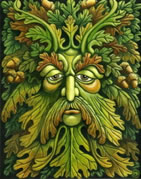
Every thought is a whispered prayer.






